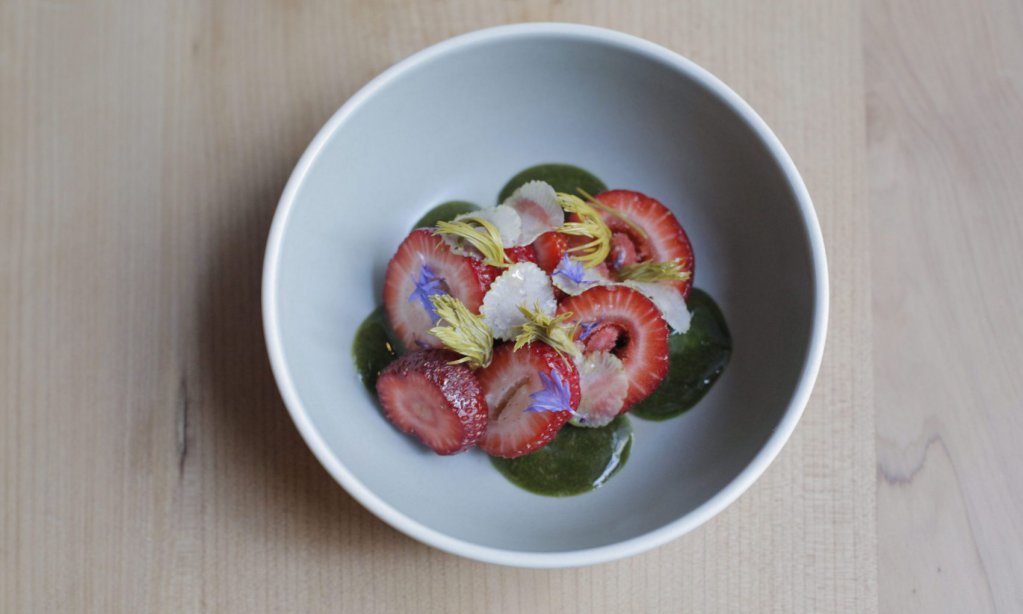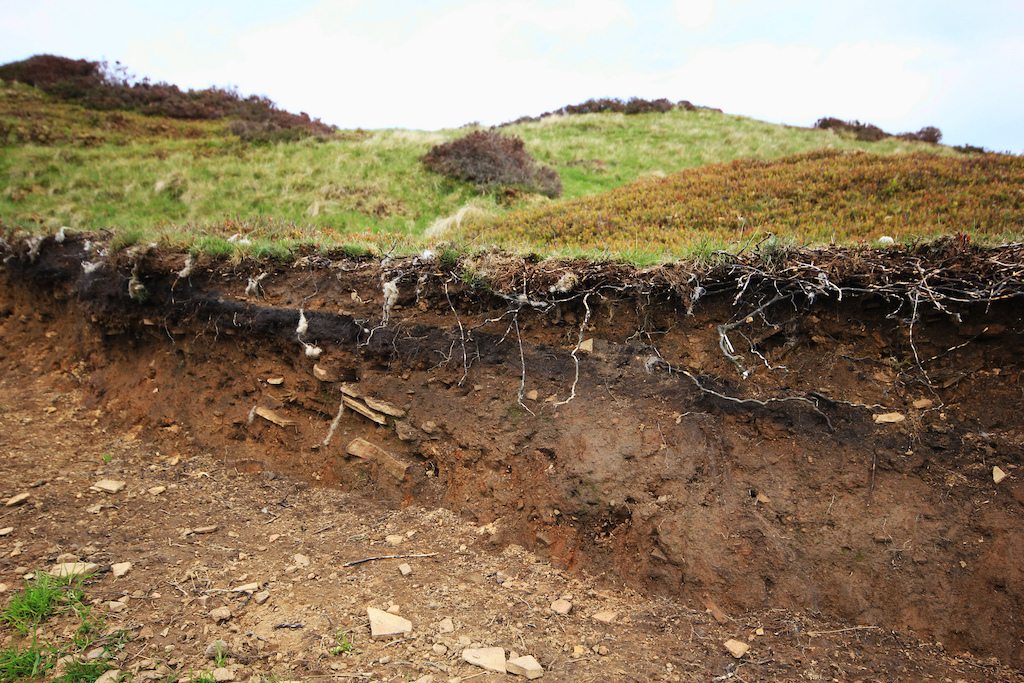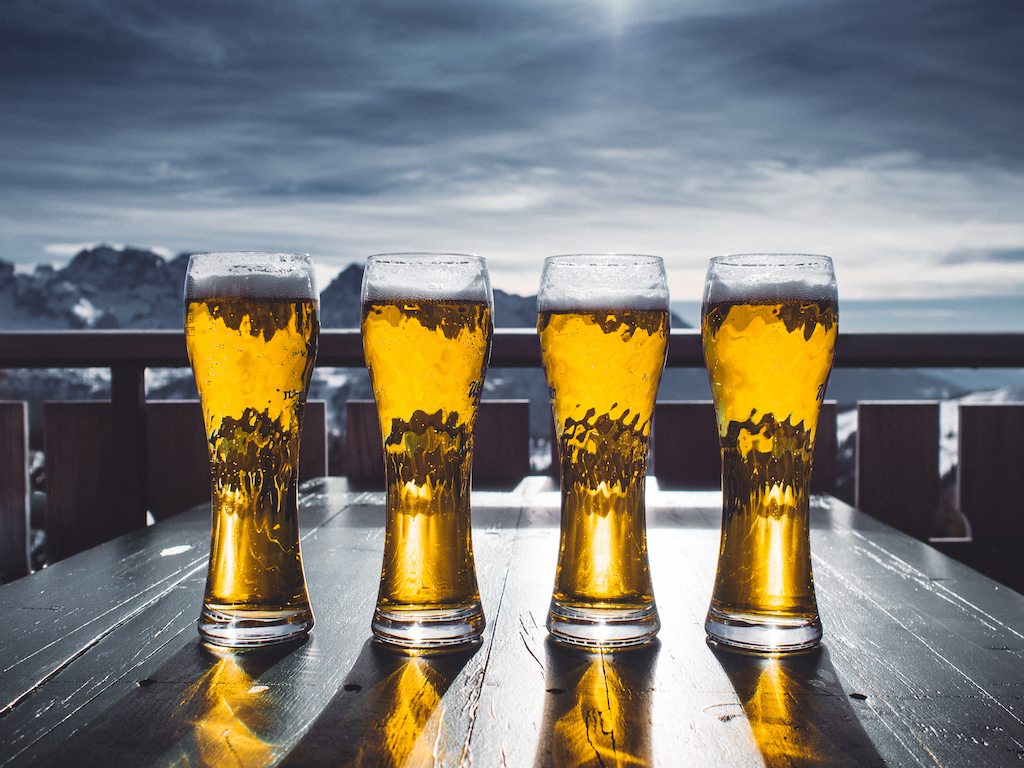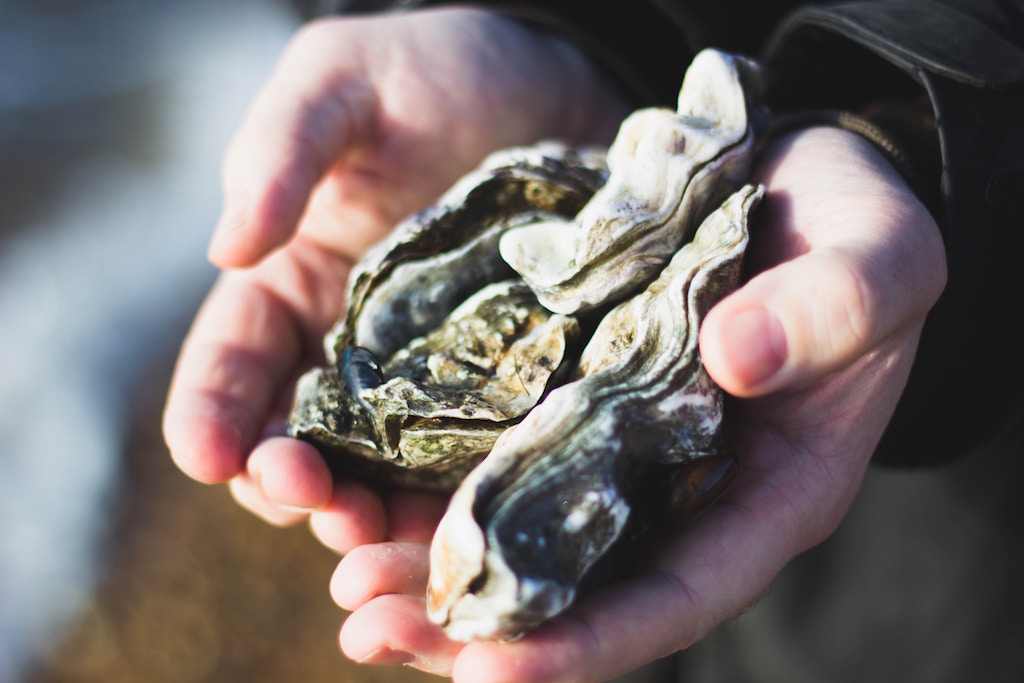
Patrick Wong
When you’re trying to tie food to needs that go beyond nutrition at its most primitive, some connections are easy to make. Others not so easy. Gluten-free? Piece of cake. Organic? Well, there are fairly straightforward rules, though not everyone agrees with them. Fair trade? Now you’re getting into more complex territory. Climate-friendly….
Where to begin?
“The food system itself is extremely complicated and messy, and actually evaluating a product for its environmental impact is really, really complicated,” says Margot Pollans, a professor of law at Pace University, specializing in food and agriculture policy. “If you’re just going to focus on climate, then my definition of climate-conscious food would be the food that minimizes its carbon footprint through its whole lifecycle.”
 Patrick Wong
Patrick Wong All beef is sourced from a hundred-year-old family farm that uses special techniques to maximize carbon sequestration
As Pollans explains, it isn’t easy to build a metric on which one type of food is placed above another for its climate-friendliness. Additional factors like transportation distance, chemical use, and worker treatment all must be taken into account—and each of those components has seemingly endless layers.
But someone has to start somewhere. And in the world of climate-friendly restaurants, that someone is Anthony Myint and Karen Leibowitz, founders of what seems to be the first climate-friendly restaurant anywhere: The Perennial, which opened this past January in San Francisco’s Mission District.
It’s a remarkable place, with a complex sense of its mission, a willingness to experiment, and a healthy awareness that to address issues like global climate change, entrepreneurs need like-minded partners with a wealth of specialized knowledge.
The food is good too.
 Patrick Wong
Patrick Wong Pumpkin Seed bisque at The Perennial
Here’s their story.
“There’s a lot going on”
The husband-and-wife pair behind The Perennial are no strangers to projects that mix food, culture, and social concerns in fascinating combinations. They co-founded Mission Chinese Food, a restaurant that operated inside a down-at-the-heels San Francisco Chinese joint, serving fiery Chinese-American hybrid dishes like their burrito of Kung Pao pastrami, salt cod fried rice, home fries, and cheese. For every entrée MCF sold, Myint and Leibowitz contributed 75 cents to the San Francisco and Marin Food Bank, paying, they say, for more than a million meals since 2010. And as of this past April, the restaurant donates 25 cents for every meat dish it serves to Zero Foodprint, an organization Myint helped found. MCF is also one of the three restaurants Zero Foodprint certifies as carbon neutral.
Charitable contributions also are at the core of the couple’s subsequent project, the Michelin-starred Commonwealth, which donates $10 to a local charity each time it sells one of chef Jason Fox’s six-course, $80 tasting menus.
The Perennial is arguably Myint and Leibowitz’s largest, most ambitious project to date.
“We took over a raw space for this restaurant. It’s the largest square footage, along with a restaurant, bar, the agricultural side of it, and educational advocacy. There’s really a lot going on,” Leibowitz says.
The pair drew on the Bay Area’s deep pool of human resources in designing the restaurant and its menu and systems. Nathan Kaufman, who heads the aquaponics program at Urban Adamah, an educational farm and community center in Berkeley, designed and maintains the restaurant’s 3,000-square-foot aquaponics operation in Oakland and manages the rooftop gardens. Head chef Chris Kiyuna, a veteran of Mission Chinese Food and Noma, not only developed the environmentally-sensitive menu, but trains the staff on skills such as whole-animal butchery. General manager Molly Fritz came over from the city’s renowned Bar Tartine and is charged not just with running the house but developing sustainable restaurant systems.
 Fireclay Tile
Fireclay Tile From raw to refined: the finished restaurant interior
“Get people to know it”
The core of a climate-friendly restaurant is sourcing—looking not just at the quality of food and whether it is fresh and free from contaminants and additives, but understanding how the production of each ingredient affects the soil and atmosphere.
Thus, the aquaponics system—which produces both fish and greens, with the fish fertilizing the water that feeds the plants and the plants cleaning the water that the fish swim in. The Perennial’s system goes one important step further: Kitchen scraps (and even shredded menus and worn out table linens) are fed to worms and larvae, which are in turn fed to fish, eliminating much of the need to buy commercial grain-based feed—a significant contributor to rising carbon dioxide levels.
 Patrick Wong
Patrick Wong The Perennial uses an aquaponics system to grow greens and fish
The Perennial sources its beef and lamb from Stemple Creek Ranch, a hundred-year-old family farm in Marin County, north of San Francisco. Stemple Creek uses calculated application of organic manure and intense rotational grazing to encourage deep root formation in perennial grasses and to minimize annual grasses, which are not as effective at sequestering carbon.
Perhaps the most unique of the Perennial’s sustainability arsenal is its use of a new grain called Kernza. Developed by the Land Institute in Kansas, Kernza is a perennial relative of wheat that has been developed through natural breeding over the last ten years. Where conventional wheat and corn plants have to be planted afresh each year, Kernza sets down deep, rich root systems that help to revitalize the soil and draw carbon dioxide from the atmosphere.
 Patrick Wong
Patrick Wong The Perennial uses a deep-rooting grain called kernza in its breads
Kernza is arguably not quite ready for the mass market; its developers want to make it easier to harvest and perhaps to adjust its grassy flavor. But The Perennial is already using it to make bread.
“The limiting factor is the amount of the grain and because of that, it’s very unknown,” Leibowitz says. “It’s very new and not in wide release, so people haven’t had a chance to play with it. So one of our goals is to get people to know it.”
 Helynn Ospina
Helynn Ospina The chairs, tables, and bar were made using reclaimed lumber
“A lot of ice”
The attention to climate impact doesn’t stop at the menu. At every turn you encounter decisions—some significant, some less so—that were made to keep the restaurant low impact and close to the ground.
The bar, chairs, and tables, for instance, were made by Paul Discoe, an Oakland-based master woodworker who uses only reclaimed lumber. Some of the wood in the space was recovered from the old Transbay Terminal. The dining room ceiling is woven from wood shavings left over from milling the wood. The rug is 100 percent recycled, the dishes made from locally sourced clay, the plaster on the walls is produced from marble processing waste.
The restaurant has also taken steps to reduce its own use of water and electricity. Some steps are simple: The restaurant uses only LED lighting. Diners don’t get fresh silverware with each course. Others are complex. The bar, for instance, is designed with an acute sense of where conventional techniques create waste—especially waste of chilled air and ice.
“The classic bar design is to have many lowboy refrigerators under the bar and bartenders opening and closing them all night,” explains Leibowitz. “Instead of that, we built one large walk-in refrigerator that has two rooms, so they’re two different temperatures, and one compressor for each. And there’s windows so bartenders can reach in. And then most of our business is coming through the taps that tap right into the refrigerator—we have beers on tap, wines, and batch cocktails. It keeps them cold steadily, instead of throwing them over ice, shake the ice, take the ice out—a lot of ice use.”
 Fireclay Tile
Fireclay Tile The two-room refrigerator behind the bar lets bartenders reach through windows rather than open doors, saving energy
“I’d like to think that it’s not trendy”
Does The Perennial reduce carbon emissions? Does anyone know how much or how little it counts in the long run? Not really. Can Myint and Leibowitz persuade consumers that this level of environmental care is something they want—and want to pay for?
That’s the big question.
“It’s hard to get the rational consumer to care about environmental issues,” Pollans says, “because what you’re asking them to pay more for is something where the benefit of the thing they’re paying more for accrues to the general public, rather than to the individual consumer.”
It is not to say that environmental concerns aren’t on the minds of consumers, according to Pollans, but even when it comes to something more commonplace like buying organic foods, environmentalism is not top-of-mind.
“A lot of the harm is intergenerational, particularly with climate change. We all do whatever we want, but our children’s generation is going to suffer the results of that. It’s very hard to internalize those concerns,” Pollans says.
Which is why Myint and Leibowitz got into the project in the first place, out of a concern for the world their daughter would live in. “Taking care of this person who would live beyond us. That’s when we took climate change as a new focus of our efforts,” Leibowitz says.
 Patrick Wong
Patrick Wong The restaurant is trying to serve small portions of meat to send a signal to customers. Not everyone takes the hint
If you’re trying to change the way people see the world, you could do far worse than start by luring them in with good food. Since the restaurant opened in January, GQ named it one of the best new restaurants in America, and Bon Appetit called it one of the best places to eat in San Francisco. But the meals have been inspiring skepticism and delight in equal measure. Some diners on Yelp were miffed about the portion sizes, especially of proteins.
And Leibowitz thinks that’s a real issue related to sustainability. “We’re trying to serve meat in lower proportions of the meal and to send the signal that meat should used in moderation,” she says. “I think we’ve gotten some pushback where people say meat portion sizes are really small, and they are by design, and it takes time to send that message.”
The goal, she says, is permanent change—and that means changing minds.
“There are still places that people are in climate change denial, but I feel like the country as a whole is coming to terms with the fact that climate change is a problem,” Leibowitz says. “It demands new behaviors, and I think that the new behaviors that we are promoting are the least terrifying. They are fun and delicious.”










